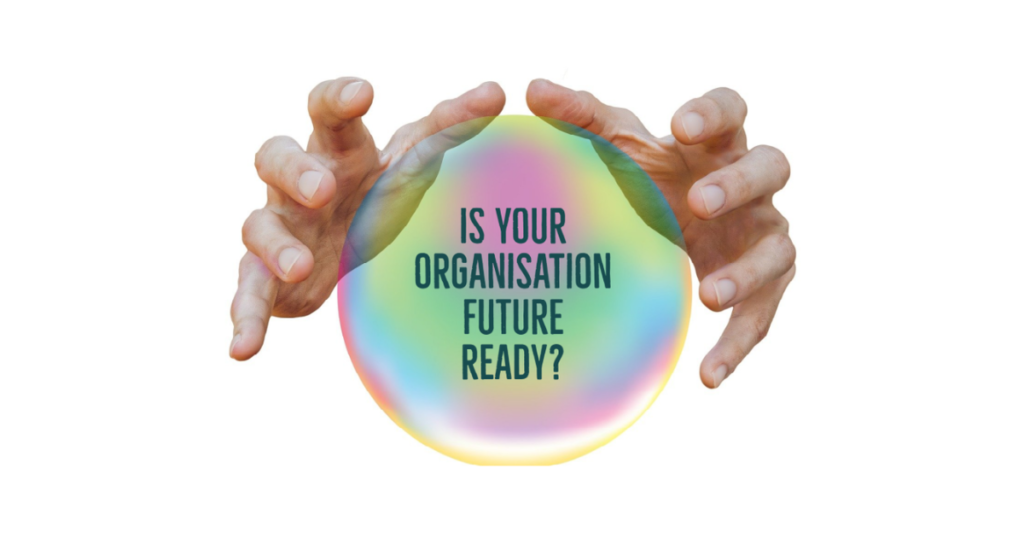
A future-ready organisation has it’s change management design in autopilot mode, and its employees can harness new opportunities and overcome challenges with a higher probability of success.
Processes, Policies, Automation Systems, Culture, and People are the five vital elements of your organisation’s future-readiness. Answer the following questions and assess your organisation in these areas:
Processes:
Do you allow fundamental rethinking with “what should be?” questions during process reengineering? This question will broaden the perspective and is the very basis of process reengineering. Disallowing this question may not help to deliver value to the customer and hence will to become a future-ready organisation.
Integrated processes that focus on customer deliverable is the key. The idea is to document how various functions are going to work together to deliver customer commitment.
Policies:
Do you monitor the impact of policies on organisational performance and conduct reviews? If you have been rewriting policies based only on the number of critical incidents, it will lose its inviolability.
Consider this hypothetical situation: The HODs are empowered to approve air travel for anyone based on the importance of the case. The finance team observed a spike in air travel approvals overriding eligibility criteria and are recommending a change in the policy. In this case, the issue could be with the ability to exercise empowerment. Rewriting policy alone may not help the organisation in this situation. If you aspire to become a future-ready organisation, you have to focus on building competencies at every level of the hierarchy.
Automation Systems:
Are your systems working in tandem? You may end up digitising several processes and still not see a significant delta in performance.
Employees go through the difficulties of shuffling between various software, emails, phone calls and message apps to complete their day to day tasks. In these processes, they miss out on certain critical information, forget to open the emails, or even open emails and fail not to take any action.
Do your digital workflows help employees prioritise, plan, collaborate, and complete tasks within SLAs? Does it help the managers and leaders to monitor, control, review performance, and facilitate preventive management?
Culture:
Does your organisational climate support a high-performance culture? No. I am not just referring to achieving sales targets.
Fair and competent organisational practices in the following areas will define the culture of an organisation:
- Attracting and developing talent
- Fitting people to the jobs inline with their education, experience, behavioural inclinations, and their career goals
- Nurturing ‘Organisation Is One Big Team’ paradigm
- Fitting people to the right teams
- Providing role clarity
- Empowerment
- Defining leadership and managerial DNA and aligning that with recruitment and promotions
- Employee engagement
- Compensation
- Identifying and rewarding behaviours aligned with organisational goals
- Career path clarity
- Providing opportunities to learn through on-the-job projects
- Facilitating employee of sense of belonging
- Role holders supporting each other in the process of continuous learning
People:
The following points objectively define the roles of First Level Managers, Middle Management, and Leaders of an organisation. Failure to establish this structure may lead to unpredictable organisational culture, inconsistent performance, increased marketing expenses or failed change initiatives:
- Individual contributors should be able to learn everything from their Immediate/First Level managers
- First Level Managers should be made accountable for employee productivity, on-the-job support and grooming future managers
- Middle Management should help First Level Managers to break organisational goals into team-level strategies
- All Managers should play the role of change agents
- Leaders should be able to envision the organisation’s short and long term opportunities, threats and facilitate change management
- Leaders are change owners and the torch bearers of corporate culture, and they should be made accountable for the same
- HR functions such as Recruitment, OD, Performance Management, Employee Engagement, Talent Pool Management should work in tandem to monitor, evaluate, and handhold the organisation in the above areas
ABOUT THE AUTHOR
Manoharan Rathinam
A Thought Leader at Prashna and a nature enthusiast at heart, Mano has invested 26 years in Business Management Consulting, Growth Hacking, and Digital Marketing. His raison d’etre can be summed up in one statement – to impact organisational performance.
When he isn’t nurturing and working towards accomplishing his dreams, you’d probably find Mano engaged in adventure activities, woodworking, cooking or gardening.










